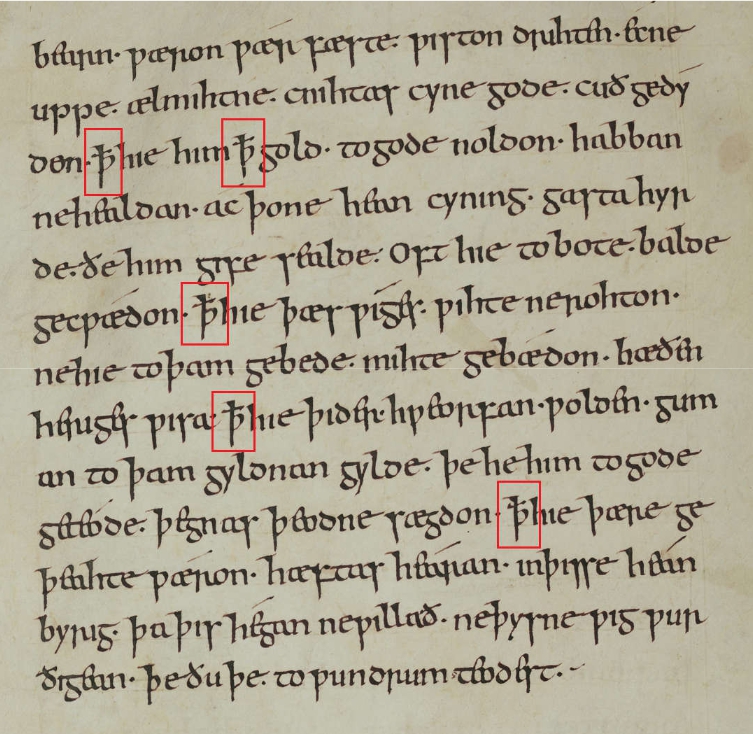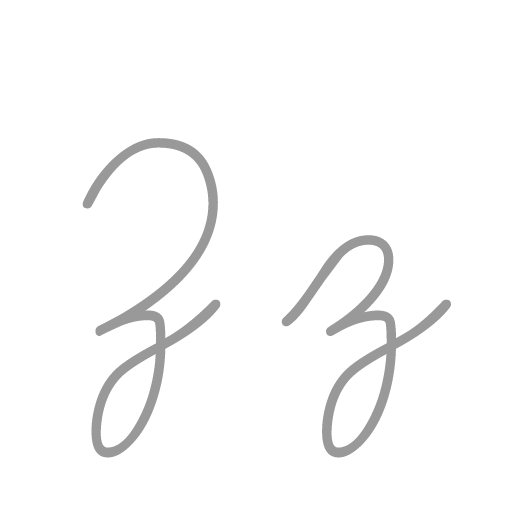
There are 26 letters in modern English, and there used to be more. How simplification skewed a number of letters and how a song about the English alphabet sounded a century ago, read in this material.
Why is the alphabet Latin, not runic
In the 5th century, the British Isles used their own runic alphabet - the futark. Only a few documents written in runes have survived to this day, but researchers have a good idea of what the Old English script looked like.
In the 6th-7th centuries, missionaries began to actively come to England, Scotland and Ireland to preach Christianity. And along with it, and Latin. This was the reason why the Futhark was replaced by the Latin alphabet.
The transition to a new alphabet began in the 7th century. And by the XI century, the Latin alphabet almost completely replaced the Futhark. By the 12th century, only scriptors were studying runes.
At the beginning of the 11th century, the monk Bertfert presented his own version of the alphabet, which they began to use throughout England. It consisted of 28 letters and one ligature.

Excerpt from Bertfert's manuscript.
In the 11th century, the English alphabet looked like this:
ABCDEFGHIKLMNOPQRSTVX YZ & Ȝ Ƿ Þ Ð Æ
There was no JUW in it then, but there were some letters from the futark. Subsequently, it was they who dropped out of English during the development of the language in the Middle Ages to the present day.
& - ampersand
Until the 19th century, the ampersand was considered a full-fledged letter of the English alphabet. And he meant exactly the same as now - the union "and".
Its history began long before it came to England - it appeared in the Roman Empire around the 1st century AD. The letters E and T were written as a ligature, denoting the union "et" - Latin "and"
The spelling of the ampersand has changed quite a bit over the years.

In addition to the "official" form, which was used in government documents and manuscripts, there was also an italic spelling of the ampersand. Most often, it was simplified to the crossed out letter E.

Until the middle of the 19th century, the ampersand was the full 27th letter of the English alphabet. The popular rhyme "A Was an Apple Pie" ended like this:
... V viewed it,
W wanted it,
X, Y, Z and ampersand
All wished for a piece in hand.
And the very name "ampersand" came from the sound reduction. The alphabet ended with the phrase "X, Y, Z, and per se and".
Per se is Latin for "proper". That is, and per se and is "and, actually, 'and'". Very quickly, this phrase became the familiar ampersand.
The problem with the ampersand was that it was formally a ligature and displayed a word, not a sound. In the middle of the 19th century, it was excluded from the alphabet.
þ - thorn - thorn
Thorne was quite comfortable in Old English, but was replaced by the digraph "th" in Middle English.
Compared to modern language, the pronunciation of this letter will be similar to th in the words "thing" or "thought".
þin = thin
þæt = that
In the Middle Ages, it was common to reduce the word "that" to one letter - the crossed out thorn.

The letter was actively used until the XIV century, but gradually the digraph th became more popular. It began to be used only in abbreviations like the one above.
The English book printer William Caxton , who launched the first printing press in the British Isles, put an end to the oblivion of the letter Thorn . He replaced it with the digraph th and partly with the letter Y.
That is why in some of his books the word "the" takes on an unusual form "ye". It was read all the same as "the", but added confusion, because in Middle English there was a pronoun "ye", which sounded differently.
This spelling of the word "the" was used by merchants in the 19th century to show their establishments as old and respectable.

Unfortunately, typography has almost completely replaced the Thorn from the English language. However, like other lost letters.
In the Middle Ages, thorn was present in a number of languages: Gothic, Old Scandinavian, Old Swedish. It disappeared from the Scandinavian languages later than from English. But the most curious thing is that today it is still used in one language - Icelandic.
Ƿ - wynn - wynn
The original Bertfert alphabet did not have a W. But a sound that was similar to [w] already existed. Therefore, the scriptor borrowed for this the Winn rune, which displayed this sound in the futhark.
In Vulgar Latin, the digraphs UU or VV were sometimes used to represent this sound, but it was the Wynn that took root in England.

Excerpt from the manuscript of Junius, X century.
In the 11th century, the Normans in the manuscripts began to combine UU into the ligature W. And by the 13th century, the new letter almost completely supplanted Winn from the manuscripts. She did not live up to the beginning of the era of printing.
Æ - ash - ash
This icon is familiar to everyone who learns English. But only its lowercase version.
æ - in English this sign displays a short open sound, as in the words "man", "plan", "family".
Æ can hardly be called a full-fledged letter - even in Old English it was designated as a digraph that combined two letters "ae".
But still it was part of the alphabet and was used quite often in words where it was necessary to mark this particular sound [æ]. For example, "Encyclopædia".
Now it is used only in transcriptions.
But there is one curious exception. On May 5, 2020, Elon Musk had a son, whom he named X Æ A-Xii. The name just has the ligature "ash" and it reads like Ex Ash Hey-Twelv.
According to Musk's wife, singer Grimes, Æ is her own pronunciation of AI, short for Artificial Intelligence.
However, California laws still do not allow the use of any characters other than the letters of the English alphabet in the child's name, therefore X AE A-XII MUSK is written in the “Name” column on the child's birth certificate.

Exactly the same situation happened with another digraph - Ethel (œ). Until the 13th century, it was used very little, and after that it was completely forgotten.
ȝ - yogh - yogh
In Old English, yogue was a fairly common letter that displayed a muted gh sound, as in thought or daughter. In some cases, it looked like [th] or a weak glottal stop.
niȝt — night
ȝif — if
yȝe — eye
ȝhere — ear
But it was "forgotten" the fastest. There is only one reason - it looks too much like the Arabic numeral 3 (three). And during the rewriting of documents, embarrassment often happened when the scribe could not understand what exactly was in the text - yogh or three.

Anglo-Saxon manuscript of the 11th century. Pay attention to the word "plouȝ".
The French did not perceive the letter yog in the borrowed words from English and replaced it with gh. Gradually, English writers and scribes began to do so.
Interestingly, the lowercase ȝ was written in exactly the same way as the lowercase z, which added even more confusion.

Actually, these problems became the reasons why the letter disappeared from use so quickly. Already in the XII century, she practically disappeared from the manuscript.
***
Historical changes sometimes lead to the fact that some letters fall out of the alphabet and are simply forgotten. Of course, this takes many years or even centuries, but this is a natural process of language development.
More to the point, this simplification process is common in most existing languages. After all, even more letters disappeared from Russian at one time than from English.
Online school EnglishDom.com - we inspire to learn English through technology and human care

Only for Habr readers, the first lesson with a teacher in an interactive digital textbook is free ! And when buying classes, you will receive up to 3 lessons as a gift!
Get a full month of ED Words premium subscription as a gift .
Enter the lostletters promo code on this page or directly in the ED Words app . The promo code is valid until 12/15/2021.
Our products: